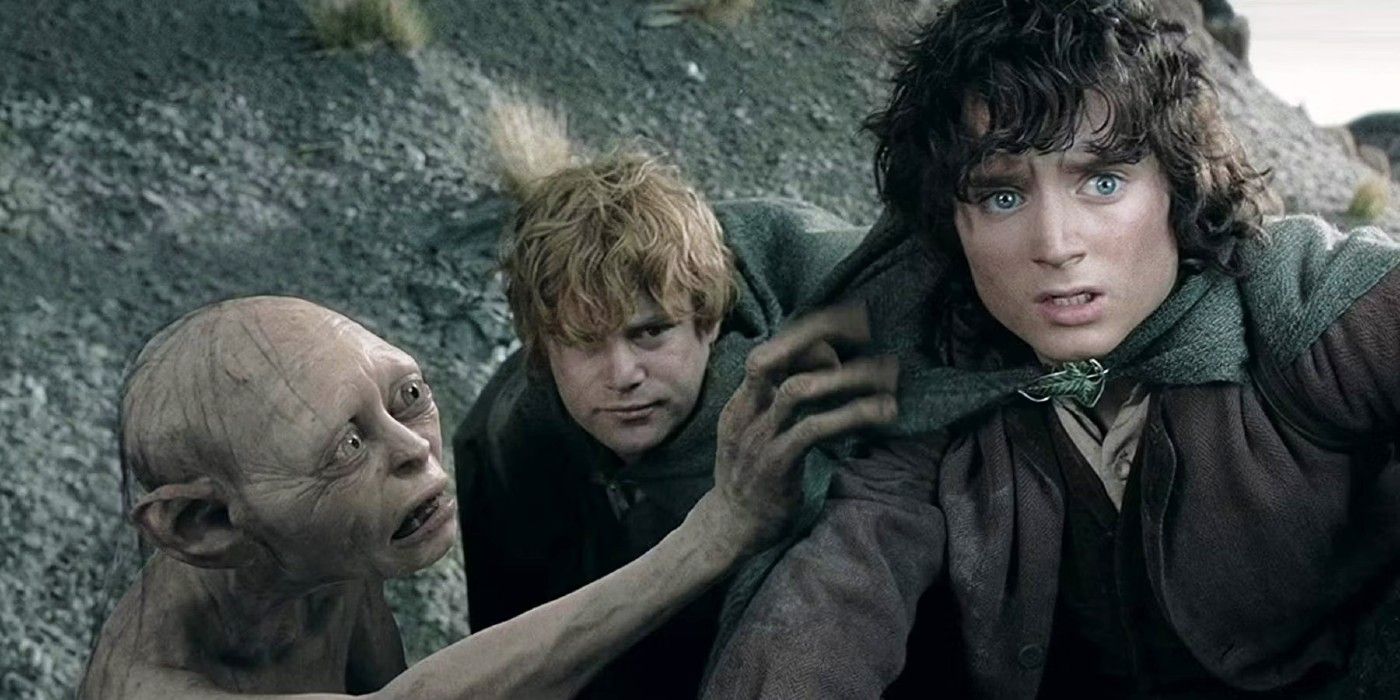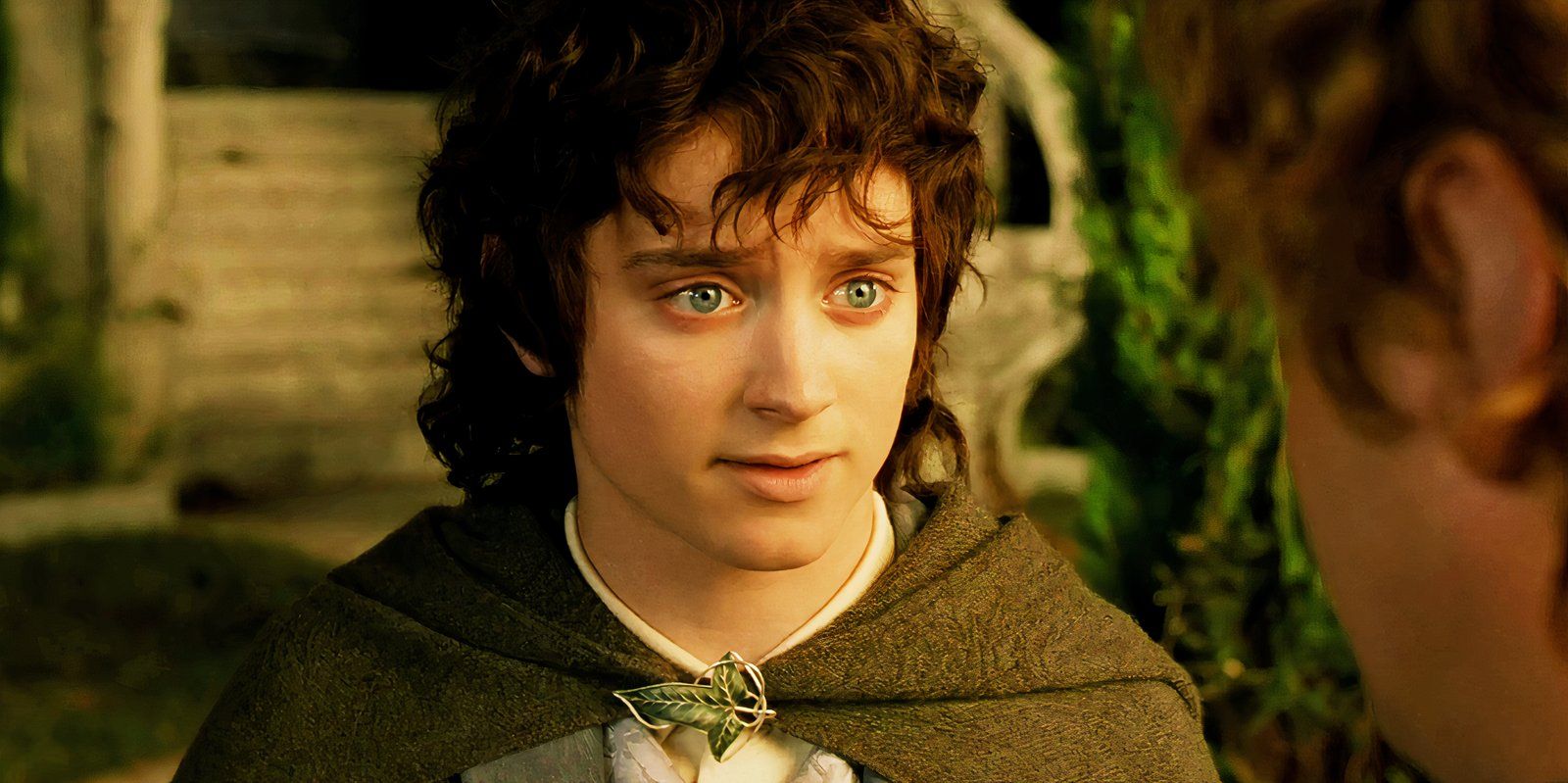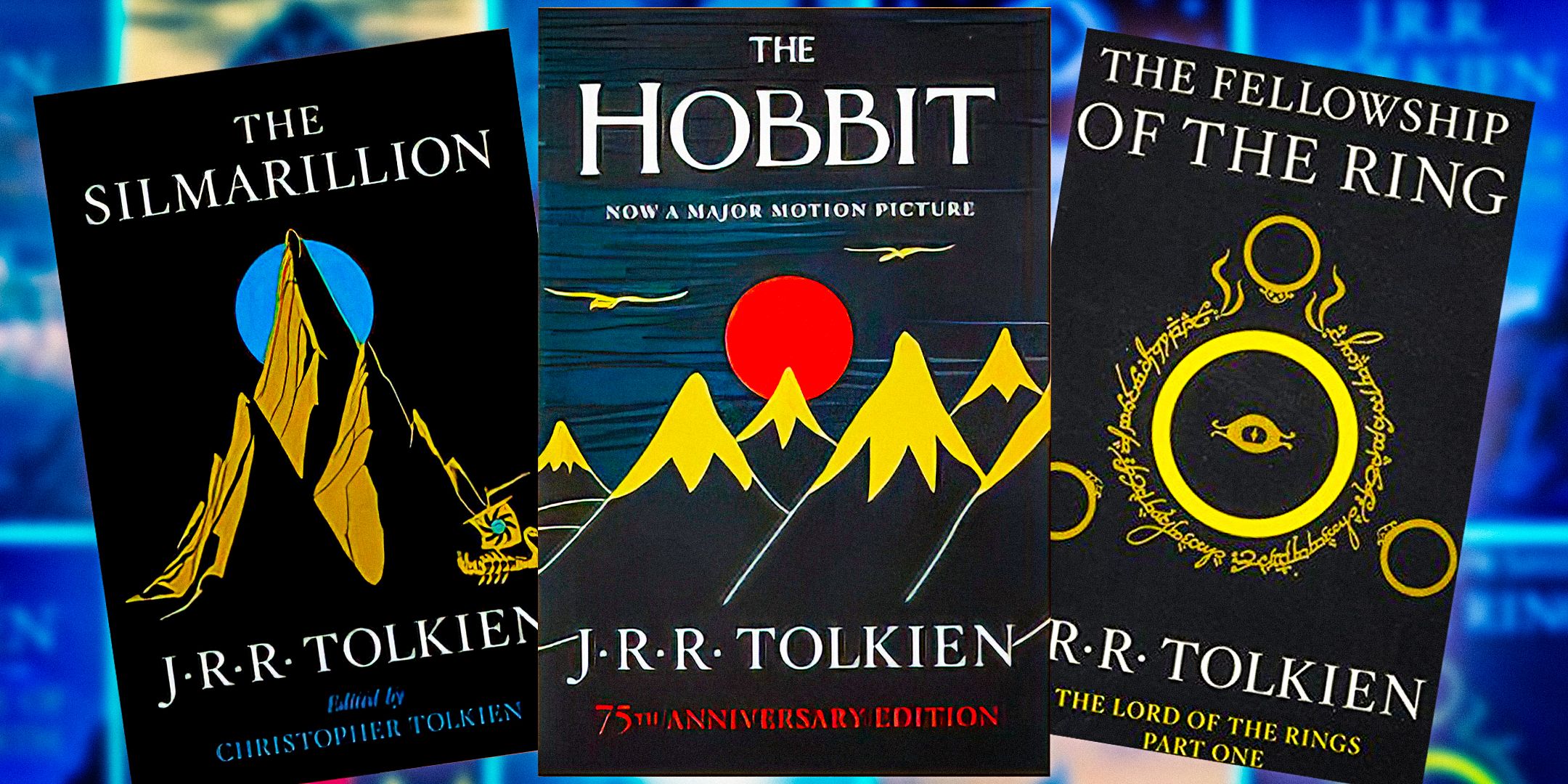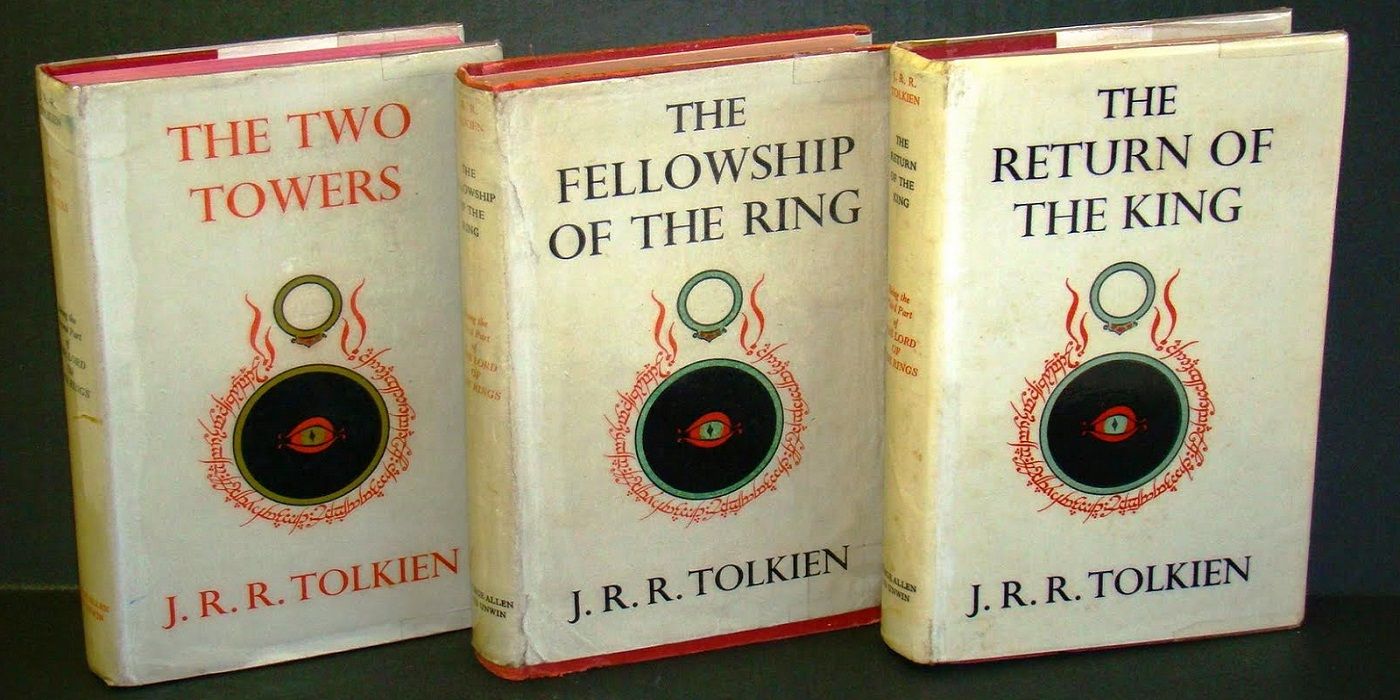Summary
- Begin with Tolkien's creation story in 'The Silmarillion' for a deep dive into the birth of Middle-earth's universe and lore.
- Follow the timeline from the First Age to the end of the Third Age with various novels in Tolkien's meticulously crafted Middle-earth chronology.
- Whether you choose to read in release order or chronological order, savor the magic of Tolkien's rich and intricate world-building at your own pace.
J.R.R. Tolkien wrote several stories set in Middle-earth along with The Lord of the Rings, each taking place at different points in this fictional universe's timeline. Of course, with many of these books being prequels to Frodo's story, it can sometimes be confusing to pinpoint a reading order. Those looking to get into Tolkien's Middle-earth works can choose between the chronological and release date orders, and both come with pros and cons.
Tolkien's first book set in Middle-earth was The Hobbit, and he expanded his world from there. His The Lord of the Rings books became the figurehead for the overall franchise, and, thanks to Peter Jackson's film trilogy, is what often comes to mind when thinking of Tolkien. However, the author constructed a deep and complex lore for Middle-earth and wrote dozens of stories that spanned thousands of years across his meticulous timeline. Though these were released years after Tolkien's death, many were set centuries before Frodo's story.
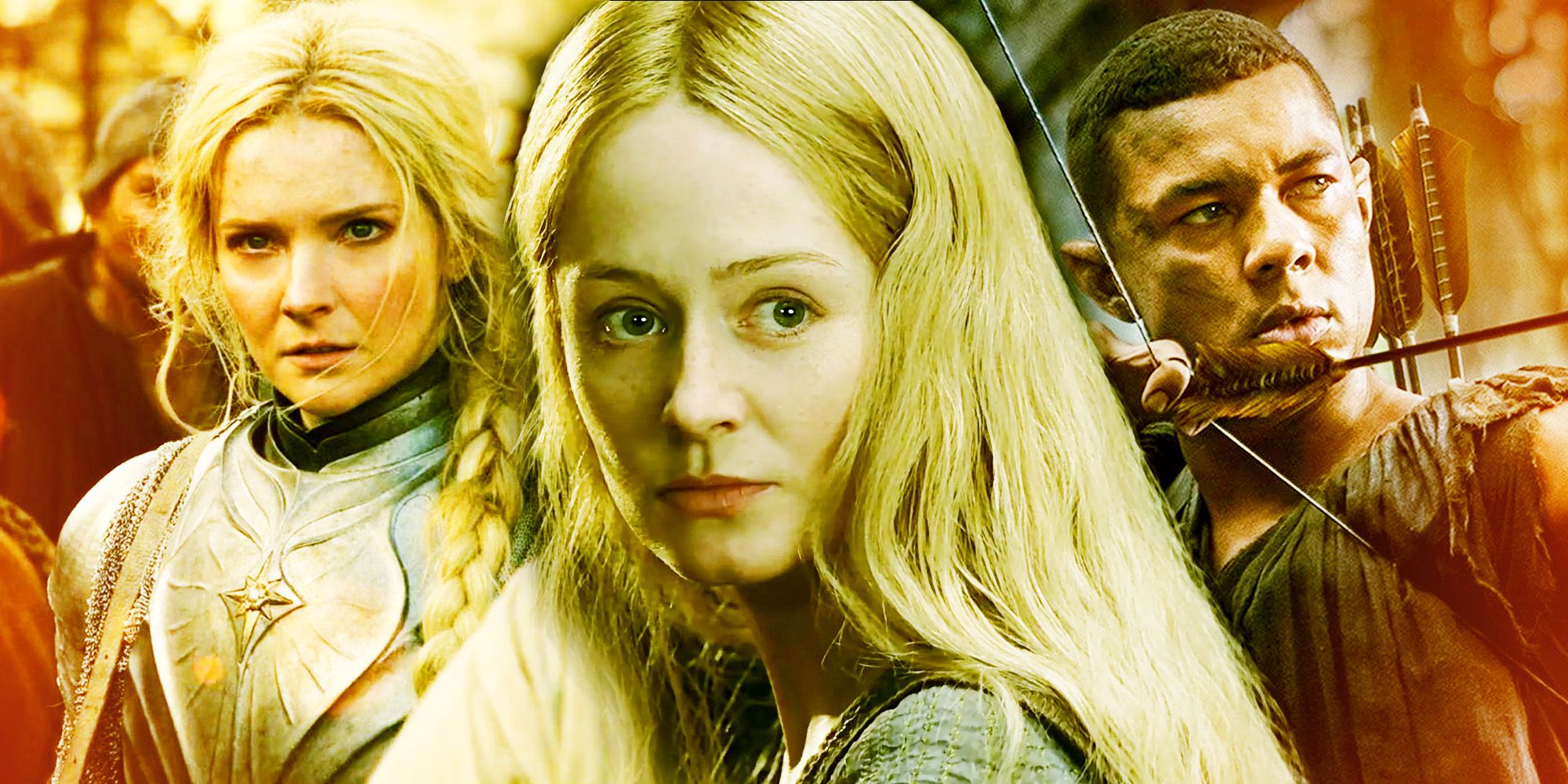
Every Upcoming Lord Of The Rings Movie & TV Show
The Lord of the Rings franchise has seen a resurgence in film and TV. Here is every project coming out of Middle-earth in the near future.
How To Read J.R.R. Tolkien's Lord Of The Rings Books In Chronological Order
Tolkien's Middle-Earth Stories In Order From Creation To The End Of The Third Age
Those looking to read all the Lord of the Rings books in chronological order will have to begin with the universe's creation. Tolkien's The Silmarillion outlines the birth of time and space, with everything brought into being by a supreme god called Eru Ilúvatar. From here, the posthumously published book describes the creation of the Ainur—the Valar and Maiar—who assisted Eru in creating Arda (the World). The Silmarillion carries on into the years before Elves and Men wake in Middle-earth, their eventual rise, and the destruction caused by the Dark Lord Morgoth.
|
J.R.R. Tolkien's Middle-Earth Books In Chronological Order |
|
|---|---|
|
Book Title |
Time Period |
|
The Silmarillion |
Creation of the Universe - End of the First Age |
|
Unfinished Tales Of Numenor & Middle-Earth |
Creation of the Universe - End of the Third Age |
|
Beren & Lúthien |
First Age 464 - First Age 503 |
|
The Children Of Húrin |
First Age 473 - First Age 501 |
|
The Fall Of Gondolin |
First Age 510 |
|
The Fall Of Númenor |
Second Age 3319 |
|
The Hobbit |
Third Age 2941 |
|
The Lord of the Rings: The Fellowship of the Ring |
Third Age 3018 |
|
The Lord of the Rings: The Two Towers |
Third Age 3019 |
|
The Lord of the Rings: The Return of the King |
Third Age 3019 - Third Age 3021 |
Morgoth's defeat marks the end of The Silmarillion and the end of the First Age of Middle-earth. Many of the next books in the chronology tell stories that are also included in the Silmarillion, though there are some differences in how certain events play out. Unfinished Tales Of Numenor & Middle-Earth also outlines the creation of the universe, but rather than ending with the First Age, it continues all the way to the destruction of the One Ring. Though this takes us to the end of the chronology, its First Age stories place it earlier in the lineup.
From here, three individual novels (all posthumously published) go more in-depth into First Age stories discussed in The Silmarillion. Beren and Lúthien is Tolkien's most famous love story set in the First Age (464 - 503). The Children Of Húrin follows the tragic story of Húrin's cursed descendants and is set around the same time as Beren and Lúthien. The Fall of Gondolin tells the story of the Secret City, which was destroyed by Morgoth's forces after its location was betrayed. In canon, Gondolin was destroyed in SA 510, so the book is set shortly after the previous two novels.
The Fall Of Númenor is the only Tolkien novel set in the Second Age of Middle-earth. It tells of the downfall of the island kingdom of Númenor, an event depicted in Prime Video's The Lord of the Rings: The Rings of Power. Finally, the last four books in Tolkien's chronology are The Hobbit and the three Lord of the Rings, set at the end of Middle-earth's Third Age.
The Lord of the Rings were initially published as six books but were later republished as three.
How To Read J.R.R. Tolkien's Lord Of The Rings Books In Release Order
Tolkien's Middle-Earth Books Weren't Released In Chronological Order
|
Tolkien's Middle-Earth Books By Order Of Release |
|
|---|---|
|
Book Title |
Release Year |
|
The Hobbit |
1937 |
|
The Lord of the Rings: The Fellowship of the Ring |
1954 |
|
The Lord of the Rings: The Two Towers |
1954 |
|
The Lord of the Rings: The Return of the King |
1955 |
|
The Silmarillion |
1977 |
|
Unfinished Tales of Numenor & Middle-Earth |
1980 |
|
The Children of Húrin |
2007 |
|
Beren and Lúthien |
2017 |
|
The Fall of Gondolin |
2018 |
|
The Fall of Númenor |
2022 |
The release dates of Tolkien's works differ significantly from the chronology. The author originally published The Hobbit as a stand-alone novel in 1937, and it wasn't until many years later that he decided to expand the story with the Lord of the Rings books. These were the only Middle-earth novels to be published before Tolkien died in 1973, but he had written innumerable notes and stories about his fictional world, which were collected and published by his son, Christopher Tolkien, in the following years.
Ultimately, there's no wrong way to enjoy Tolkien's life's work, so long as the magic is thoroughly savored and enjoyed.
The Lord of the Rings is a rare case in which the release-year order may be preferred to the chronological one. The Silmarillion is written more like a textbook than a novel, and it is far easier to read with the context of The Lord of the Rings to build upon. However, since the stories of Beren and Lúthien and The Fall of Gondolin are mentioned in the Lord of the Rings books, there may be some value in reading these stories first. Ultimately, there's no wrong way to enjoy Tolkien's life's work, so long as the magic is thoroughly savored and enjoyed.
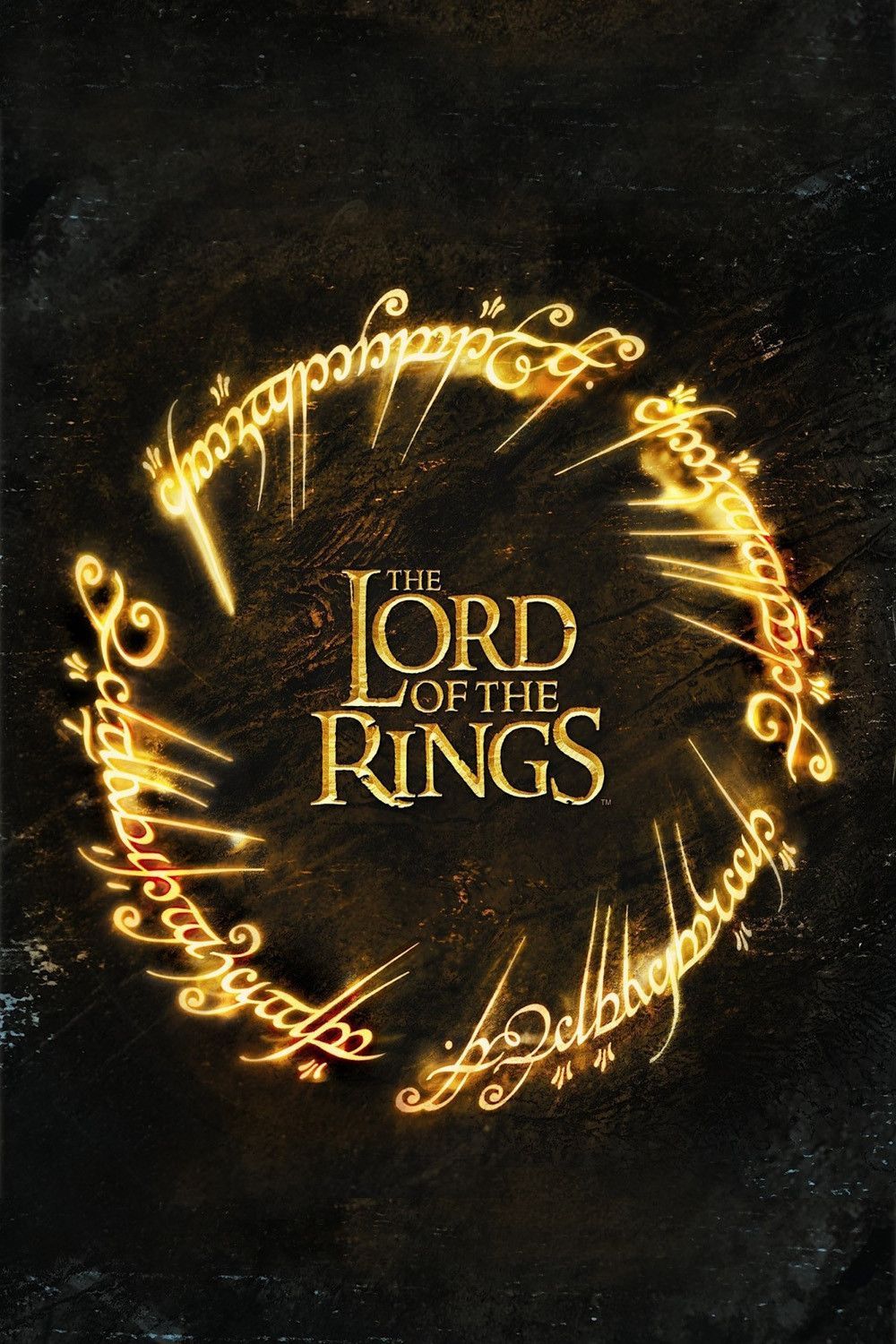
The Lord of the Rings
The Lord of the Rings is a multimedia franchise consisting of several movies and a TV show released by Amazon titled The Lord of the Rings: The Rings of Power. The franchise is based on J.R.R. Tolkien's book series that began in 1954 with The Fellowship of the Ring. The Lord of the Rings saw mainstream popularity with Peter Jackson's The Lord of the Rings and The Hobbit trilogies.


